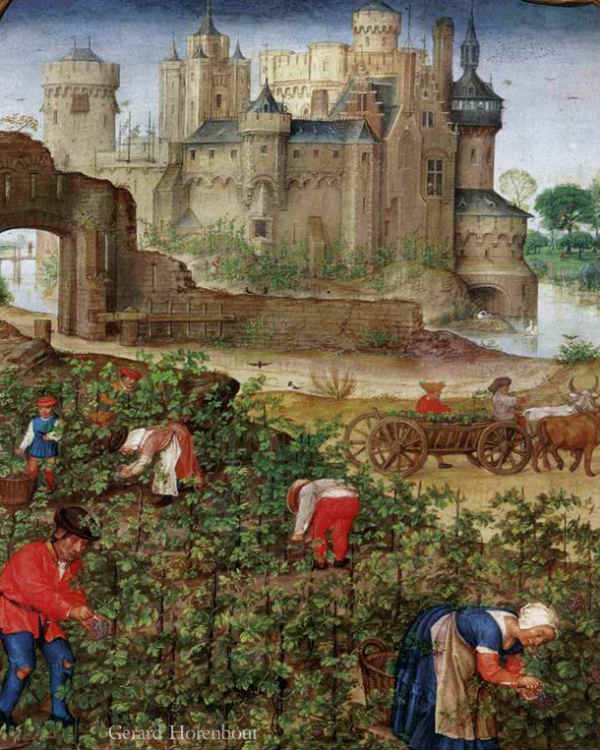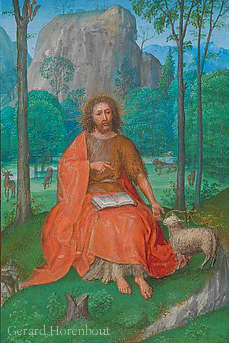Search:: Artists Alphabetically Artists by Country Artists by Century Artists by Movement
Gerard Horenbout also known as Master of James IV of Scotland
1465 - 1541
Flemish Northern Renaissance Painter and Illuminator

Gerard Horenbout was born into a family of painters and became the father of two famous painters. He became one of the most important Northern Renaissance painters working in Ghent. Like many painters of his time he signed very few paintings. In the 15th century Ghent was one of the epicenters of creativity, learning, architecture, painting, ironworks, literature and commerce. Author Walter M. Gallichan describes Ghent in the time of Gerard Horenbout, "Ghent was early a stronghold of powerful trade guilds, and one of the meeting-places of these unions was in the Market Square. These organisations of craftsmen were probably established first by the Flemish weavers to protect the woollen industry. All over Europe the guilds were instituted by artisans working in walled towns during the Middle Ages. Chaucer mentions them in England in his day. The guilds had their masters or wardens, who exercised an almost despotic sway over the members, and watched their interests zealously.
The election of the wardens was made a pompous ceremony, accompanied by a religious service which was attended by the mayor and corporation, and followed by a banquet. No doubt the Market Square of Ghent saw many of these ceremonies in days of old. The power of the merchants and manufacturers of Ghent was great in the time of the city’s affluence. We gain an idea of their sumptuous houses and their costly apparel from many paintings of the Dutch School. Often the merchant was wealthier than the feudal baron, and kings were known to borrow from them. Jacques Van Artevelde, “the brewer” of Ghent, was an important burgher in his day, though he was not, strictly speaking, a brewer, but a patrician who joined the Brewer’s Guild, and headed a riotous faction against a rival guild. A fierce fight broke out in the square, and several hundreds of the combatants were slain. Van Artevelde was a staunch friend of Edward III. of England. He was killed by the populace for plotting to make Edward ruler of Flanders."
Gerard Horenbout left Ghent with his family around the start of the 1500s. Perhaps he desired a more stable life without all the intrigue and threats of war . he ended up court painter to Henry the Eighth and later ended up in Scotland. It was while Scotland that he became known as Master of James IV of Scotland.
Important Words, People, Phrases, Characteristics related to the Northern Renaissance Art Movement - allegorical painting, rebirth, invention of oil painting, Hieronymus Bosch, Limbourg Brothers, Desiderius Erasmus, Robert Campin, Jan Van Eyck, Jean Fouquet, Albrecht Dürer, Johannes Gutenberg, Johann Reuchlin, Martin Luther, rise of the merchant class, Protestant Reformation, Calvinisim, glazing, impasto, scriptorium, illuminator, invention of the printing press, woodcuts, engravings, Antwerp School, Guild of Saint Luke, commerce, Flemish School, Northern Europe, Antwerp School, Flanders, Bruges, renewed interest in classical learning, mythological scenes, genre painting, landscapes, portraits, moralizing overtones, human vices, lust, paradise, spirituality, piousness, living a simple life, reform, Human Reasoning, tradesmen at work, idyllic scenes of peasants, playing games, feasting, linear perspective, \Heliocentric Theory, humour, satire, spiritually significant, illuminated manuscript, idealized biblical themes, scriptorium, emotion, illuminator, iconoclast, Age of Discovery, Virgin and Child, axonometric drawing, curiosity about the natural world, realistic use of colours and light, Old Testament stories, Gospel parables, The Blackdeath, Christian symbolism
☼☼☼☼☼

© HistoryofPainters.com If you like this page and wish to share it, you are welcome to link to it, with our thanks. updated 3/25/2017